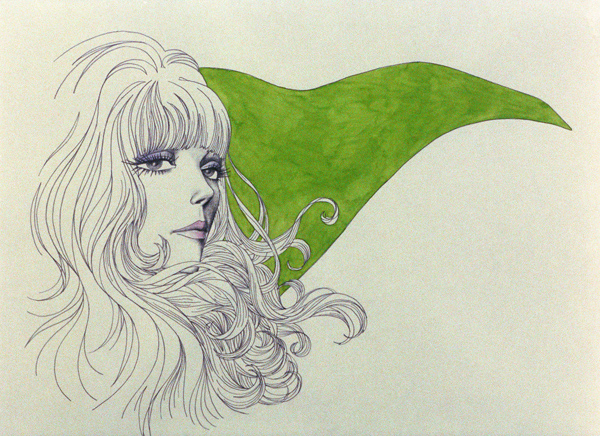Belladonna of Sadness is an anime film directed by Eiichi Yamamoto and initially released in 1973. Recently rediscovered and remastered, it is gorgeously drawn, beautifully scored, and, as is wont with most erotic Japanese anime, disturbing.
The story is based on a 19th-century nonfiction book, Satanism & Witchcraft by Jules Michelet. The film fictionalizes the main idea of the book, that witchcraft was a rebellion against feudalism. It starts off as main characters Jeanne and Jean get married. And there are your two minutes of happiness in the film. The couple goes before the local baron, who demands 10 cows as a marriage tax. Jean only has one. So for payment, the baron rapes Jeanne and invites the entire court to do so as well. Jeanne’s ensuing rage produces a demon who seduces her with the idea of power, and the more power she achieves, the larger and more powerful the demon becomes.
Belladonna is unique because the animation is hardly animation at all; the technique consists of the camera panning over hand-drawn and exquisitely painted watercolors, with the occasional minimal movement. An artful exception is when the music, courtesy of Japanese avant-garde composer Masahiko Satoh, hits full freak-out mode and the animation goes into hyperdrive. Aside from the naked women and the demon, it sidesteps what later became anime tropes, i.e. fast-paced cutting and doe-eyed protagonists.
To reiterate, “animation” is a misnomer to describe this film. Most of it essentially a painting, but it is a gorgeous painting. Viewers will be treated to some of the most beautiful drawings they have seen in quite a while. Even when the filmmakers are deliberately testing boundaries, they do so tastefully—which is saying something when one scene depicts an orgy in which fish and frogs emerge from the nether regions. The other selling point is Satoh’s score, a combination of placid, languid ballads, piano dirges, and full-on acid-rock blowout. It is fantastic on its own, but it adds immeasurably to the emotional tone.
There is a feminist angle to the story: The demon outside of her is the demon also inside of her. All the men are simpering wimps or mean tyrants, and Jean is particularly portrayed as weak-willed and whiny. This, along with the power of the mob that alternately loves and loathes Jeanne for the power she accrues, is the system she’s up against. She decides, at first reluctantly and then enthusiastically, to exploit it. Belladonna is not feminist through and through, however. There is a lot of nude Jeanne being violated by the demon. Unfortunately, the film doesn’t completely shed its misogynist skin. It feels like filmmakers want to have its cake and eat it, too.
All in all, fans of anime and erotic cinema will find Belladonna of Sadness up their alley.

















Leave A Comment